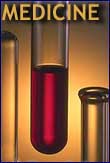Fraud, Errors and Misconceptions in Medical Research

Updated 2:09 p.m. ET
Three years after being charged for fraud, misusing state funds and violating bioethics laws, disgraced South Korean stem cell researcher Hwang Woo-suk was convicted today on some but not all charges.
The court determined he had partially fabricated the research results, according to media reports, but since he has repented the court handed down a 2-year suspended sentence.
Hwang's team in 2004 claimed to have cloned human embryonic stem cells. But the scientist fabricated crucial data, and even researchers working on the project didn't know the results had been faked.
While Hwang's case has become one of the most notorious examples of breakthroughs gone bad, even well-done and above-board health and medical studies have a history of being faulty, in part because the scientific process allows for publication of data that may appear to reveal a breakthrough, even though subsequent research might show just the opposite.
A study in 2005, published in the Journal of the American Medical Association, found that one-third of all medical studies turn out to be wrong.
Even common existing treatments can be found useless years after they're widely accepted by the medical profession and the public. In 2007, scientists showed that honey works better than cough medicines in soothing children's coughs.
Get the world’s most fascinating discoveries delivered straight to your inbox.
Another study this year revealed that conflicts of interest often taint medical studies. The research, detailed in the June 15 issue of the journal Cancer, found that 29 percent of cancer research published in high-profile journals had disclosed a conflict of interest. Those conflicts, moreover, seem to affect how studies were conducted. Research that had industry funding, for example, focused on treatment 62 percent of the time, while studies not funded by industry focused on treatment only 36 percent of the time.
Even good studies can be mucked up by the media, which tend to latch on to the juiciest stuff and squeeze all they can out of it, not always reporting the follow-up study in which the hoopla dries up. The result: distortion, albeit often unintentional.
Many studies produce findings that are incremental or relatively insignificant, yet the publicity machines at institutions are eager to promote their researchers' work, and journalists don't always do their jobs fully to dig into the context that reveals a study's true significance, or lack thereof.
For example, a review in 2006 found that much of what you read regarding health research lacks important context. Specifically, the media often omit basic facts in stories they report from professional medical conferences, the study concluded. That's partly because research revealed at conferences often has not been published in peer-reviewed journals, where such context is required and where outlandish claims are often quashed.
Then again, Hwang's supposed breakthrough in 2005 was published in Science, one of the most respected journals around.
In The Water Cooler, Imaginova's Editorial Director Robert Roy Britt looks at what people are talking about in the world of science and beyond. Find more in the archives and on Twitter.
Robert is an independent health and science journalist and writer based in Phoenix, Arizona. He is a former editor-in-chief of Live Science with over 20 years of experience as a reporter and editor. He has worked on websites such as Space.com and Tom's Guide, and is a contributor on Medium, covering how we age and how to optimize the mind and body through time. He has a journalism degree from Humboldt State University in California.



